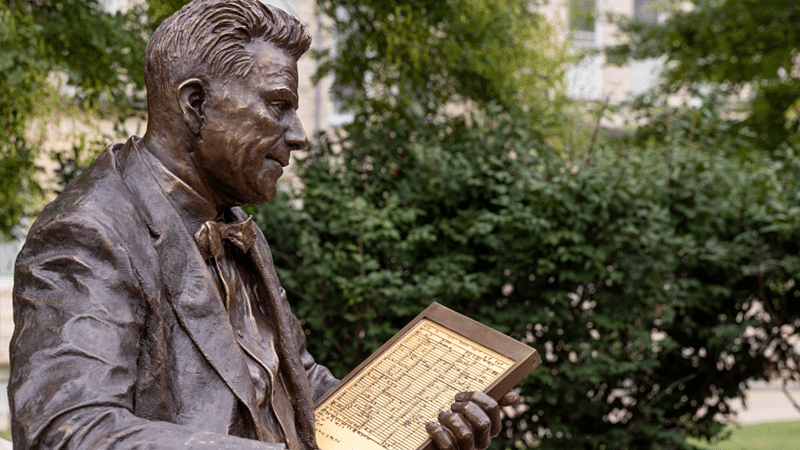Indiana University has erected a statue of Alfred Kinsey, the self-described ‘sexologist’ who, after his death, was revealed to have falsified research and legitimised child abuse.
Kinsey was a researcher at the University in the 1940s, setting up its Institute for Sex Research in 1947 in order to conduct his expansive research into human sexuality. His books, Sexual Behaviour in the Human Male (1948) and Sexual Behaviour in the Human Female (1953) were bestsellers, and now known collectively as the Kinsey Reports.
He campaigned for the repeal of any legislation which restricted sexual freedom, believing that people would only be ‘free and fulfilled’ once the restraints of Judaeo-Christian morality are removed.
Flawed methodology
Kinsey claimed his research proved that there is ‘no normal’ with regard to sexual behaviour, but he did regard abstinence and celibacy as ‘abnormal’.
He encouraged his researchers, all men, to have sex with one another. He also had sexual relations with his assistants and his research subjects, keeping secret recordings of these encounters. He also claimed that between ten and 37 per cent of adults had committed homosexual acts and that 94 per cent had committed adultery.
Kinsey said his results were representative of the general population, but it was later revealed he had surveyed “a male interviewee sample containing approximately 25% prisoners or ex-prisoners, an abnormal percentage of sex offenders, and other sexually unconventional groups in numbers unrepresentative of society”.
Even today, almost 75 years later, the percentage of those in the US identifying as LGBT is only around seven per cent.
Child abuse
Kinsey was lauded by some during his lifetime, even making the cover of Time magazine in 1953.
It was only after his death that previously ignored aspects of his research came to light that exposed his collaboration with, and protection of, serial child sex abusers.
Table 34 in Sexuality in the Human Male details cases of extreme repeated and prolonged child abuse perpetrated on over 300 children, including infants just two months old.
Kinsey originally claimed that this research came from multiple sources, but it was later revealed that the ‘data’ had been collected by one man, Rex King, who kept diaries of his abuse of children over a twenty year period.
‘Duplicitous sexual deviant’
It was not until independent researcher Dr Judith Reisman challenged his research methods in the 1980s that Kinsey came under serious scrutiny.
Reisman called Kinsey a “duplicitous sexual deviant” and highlighted the extreme child abuse that had been recorded but largely ignored.
She was ostracised by mainstream media for her views, and Indiana University tried to censor her book Kinsey, Sex and Fraud.
However, her concerns were substantiated in the 1998 Channel 4 documentary Kinsey’s Paedophiles, which investigated Kinsey’s motives as well as his flawed methodology.
‘Sexual exploitation of infants’
In a press release, Indiana University said: “The sculpture’s installation on the Bloomington campus demonstrates the university’s pride in the living legacy of research and academic freedom Kinsey helped to forge and the institute’s ongoing commitment to equity regarding sexual diversity established by Kinsey’s research.”
The Christian Institute’s Social Policy Analyst Dr Sharon James was appalled by the continued adulation of Kinsey, despite his now well-documented wrongdoings.It is astonishing that Indiana State University is honouring Alfred Kinsey
She said: “Today, whatever else people believe, all would say that ‘consent’ to sexual activity is essential. So it is astonishing that Indiana State University is honouring Alfred Kinsey.
“His ‘research’ involved sexual exploitation of infants and young children, who were not capable of informed consent.”

